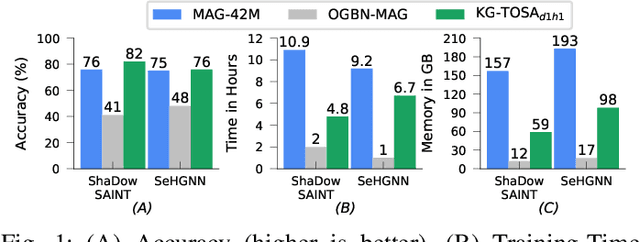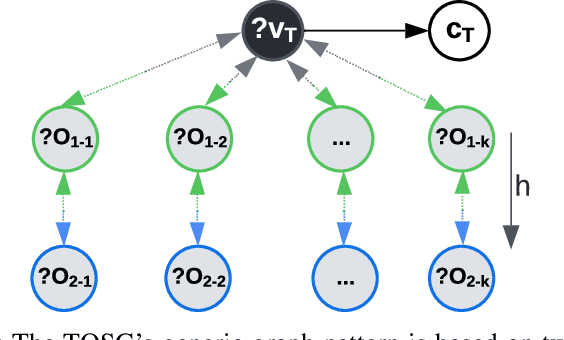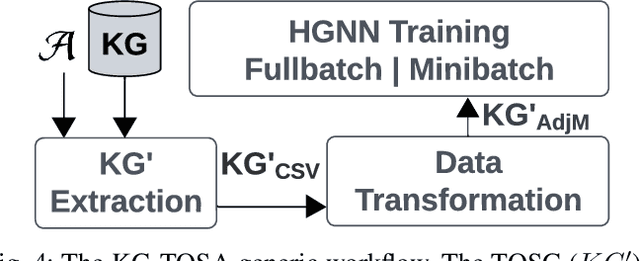Hussein Abdallah
Task-Oriented GNNs Training on Large Knowledge Graphs for Accurate and Efficient Modeling
Mar 09, 2024



Abstract:A Knowledge Graph (KG) is a heterogeneous graph encompassing a diverse range of node and edge types. Heterogeneous Graph Neural Networks (HGNNs) are popular for training machine learning tasks like node classification and link prediction on KGs. However, HGNN methods exhibit excessive complexity influenced by the KG's size, density, and the number of node and edge types. AI practitioners handcraft a subgraph of a KG G relevant to a specific task. We refer to this subgraph as a task-oriented subgraph (TOSG), which contains a subset of task-related node and edge types in G. Training the task using TOSG instead of G alleviates the excessive computation required for a large KG. Crafting the TOSG demands a deep understanding of the KG's structure and the task's objectives. Hence, it is challenging and time-consuming. This paper proposes KG-TOSA, an approach to automate the TOSG extraction for task-oriented HGNN training on a large KG. In KG-TOSA, we define a generic graph pattern that captures the KG's local and global structure relevant to a specific task. We explore different techniques to extract subgraphs matching our graph pattern: namely (i) two techniques sampling around targeted nodes using biased random walk or influence scores, and (ii) a SPARQL-based extraction method leveraging RDF engines' built-in indices. Hence, it achieves negligible preprocessing overhead compared to the sampling techniques. We develop a benchmark of real KGs of large sizes and various tasks for node classification and link prediction. Our experiments show that KG-TOSA helps state-of-the-art HGNN methods reduce training time and memory usage by up to 70% while improving the model performance, e.g., accuracy and inference time.
Towards a GML-Enabled Knowledge Graph Platform
Mar 03, 2023



Abstract:This vision paper proposes KGNet, an on-demand graph machine learning (GML) as a service on top of RDF engines to support GML-enabled SPARQL queries. KGNet automates the training of GML models on a KG by identifying a task-specific subgraph. This helps reduce the task-irrelevant KG structure and properties for better scalability and accuracy. While training a GML model on KG, KGNet collects metadata of trained models in the form of an RDF graph called KGMeta, which is interlinked with the relevant subgraphs in KG. Finally, all trained models are accessible via a SPARQL-like query. We call it a GML-enabled query and refer to it as SPARQLML. KGNet supports SPARQLML on top of existing RDF engines as an interface for querying and inferencing over KGs using GML models. The development of KGNet poses research opportunities in several areas, including meta-sampling for identifying task-specific subgraphs, GML pipeline automation with computational constraints, such as limited time and memory budget, and SPARQLML query optimization. KGNet supports different GML tasks, such as node classification, link prediction, and semantic entity matching. We evaluated KGNet using two real KGs of different application domains. Compared to training on the entire KG, KGNet significantly reduced training time and memory usage while maintaining comparable or improved accuracy. The KGNet source-code is available for further study
* 9 pages, 15 figures, accepted at ICDE 2023
 Add to Chrome
Add to Chrome Add to Firefox
Add to Firefox Add to Edge
Add to Edge